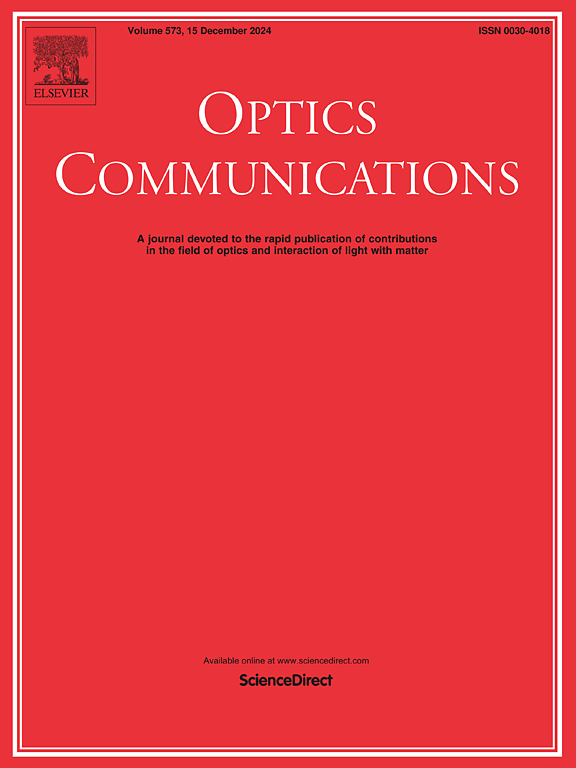High extinction ratio multi-polarization states preparation based on SOI integrated chips
IF 2.2
3区 物理与天体物理
Q2 OPTICS
引用次数: 0
Abstract
Quantum key distribution (QKD) leverages the principles of quantum mechanics to provide an unconditionally secure public-key cryptographic system. Polarization encoding is a commonly employed method in QKD. However, the low extinction ratio of polarization states significantly impacts the error rate in QKD systems, thereby threatening the security of communication. Here, we propose a structure and method for the preparation of high-extinction-ratio polarization states based on silicon photonic integrated chips. Our chip integrates thermo-optic modulators and silicon carrier-depletion modulators to achieve the transformation of information from path encoding to polarization encoding through a 2-D grating. We have successfully prepared six polarization states using only thermo-optic modulators, with an average polarization extinction ratio of 35.8 dB. Furthermore, we have successfully prepared six polarization states using a combination of thermo-optic and electro-optic modulators, with an average polarization extinction ratio exceeding 30.6 dB. Notably, our system demonstrated remarkable stability over a 2-h testing period, with the polarization extinction ratio remaining essentially unchanged.
基于 SOI 集成芯片的高消光比多偏振态制备技术
量子密钥分发(QKD)利用量子力学原理提供无条件安全的公钥加密系统。极化编码是 QKD 中常用的一种方法。然而,极化态的低消光比严重影响了 QKD 系统的错误率,从而威胁到通信的安全性。在此,我们提出了一种基于硅光子集成芯片制备高消光比偏振态的结构和方法。我们的芯片集成了热光学调制器和硅载流子损耗调制器,通过二维光栅实现了从路径编码到偏振编码的信息转换。我们仅使用热光学调制器就成功制备了六种偏振态,平均偏振消光比为 35.8 dB。此外,我们还利用热光和电光调制器组合成功制备了六种偏振态,平均偏振消光比超过 30.6 dB。值得注意的是,我们的系统在 2 小时的测试期间表现出了极高的稳定性,偏振消光比基本保持不变。
本文章由计算机程序翻译,如有差异,请以英文原文为准。
求助全文
约1分钟内获得全文
求助全文
来源期刊

Optics Communications
物理-光学
CiteScore
5.10
自引率
8.30%
发文量
681
审稿时长
38 days
期刊介绍:
Optics Communications invites original and timely contributions containing new results in various fields of optics and photonics. The journal considers theoretical and experimental research in areas ranging from the fundamental properties of light to technological applications. Topics covered include classical and quantum optics, optical physics and light-matter interactions, lasers, imaging, guided-wave optics and optical information processing. Manuscripts should offer clear evidence of novelty and significance. Papers concentrating on mathematical and computational issues, with limited connection to optics, are not suitable for publication in the Journal. Similarly, small technical advances, or papers concerned only with engineering applications or issues of materials science fall outside the journal scope.
 求助内容:
求助内容: 应助结果提醒方式:
应助结果提醒方式:


